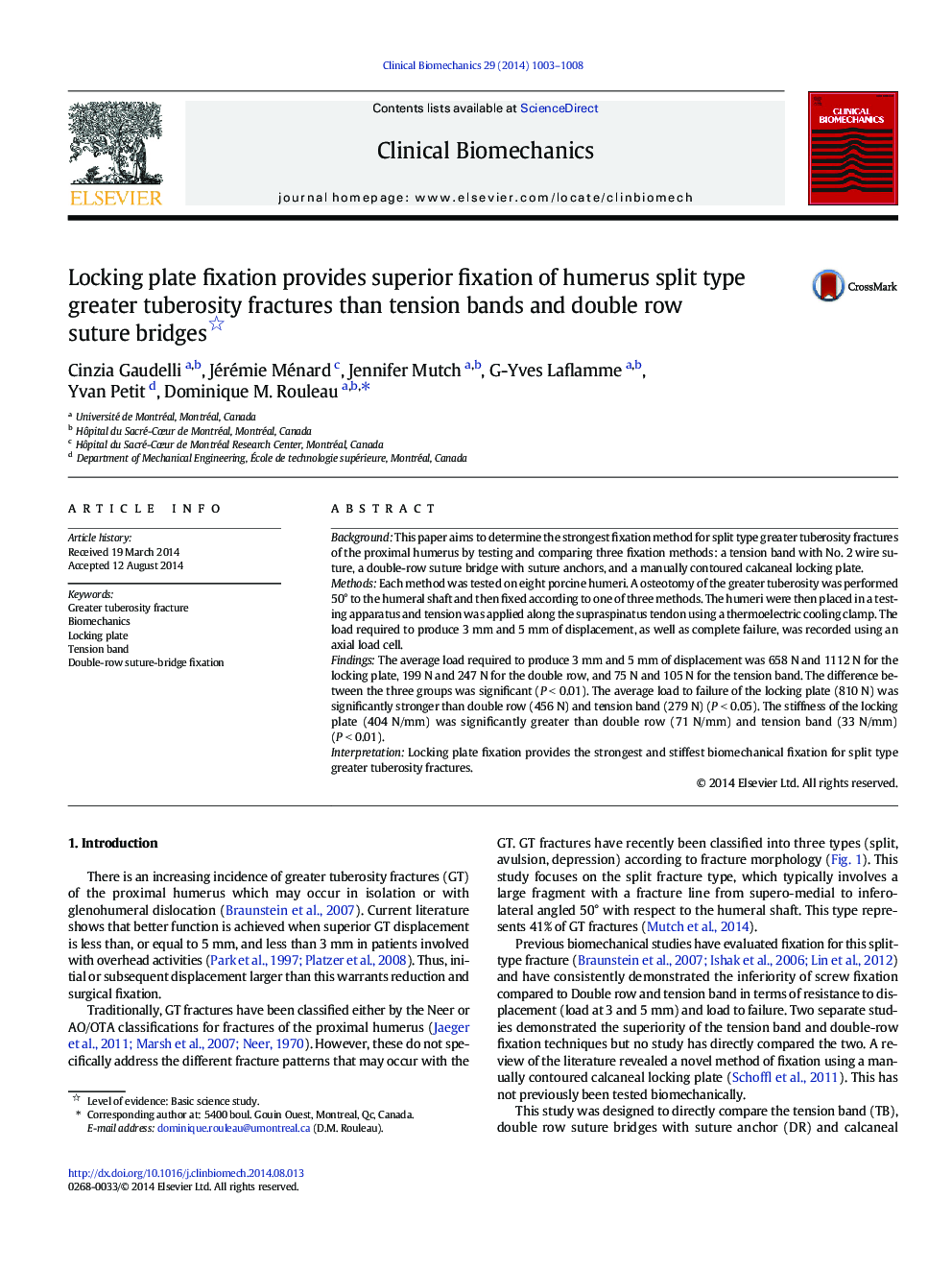| Article ID | Journal | Published Year | Pages | File Type |
|---|---|---|---|---|
| 4050300 | Clinical Biomechanics | 2014 | 6 Pages |
•Locking plate provides the strongest and stiffest fixation for split type GT fracture.•Tension bands and double row suture bridges have similar construct stiffness.•The locking plate construct strength is higher than the muscle tissues strength.•Only 25% of locking plate construct has reached the 5 mm of displacement.
BackgroundThis paper aims to determine the strongest fixation method for split type greater tuberosity fractures of the proximal humerus by testing and comparing three fixation methods: a tension band with No. 2 wire suture, a double-row suture bridge with suture anchors, and a manually contoured calcaneal locking plate.MethodsEach method was tested on eight porcine humeri. A osteotomy of the greater tuberosity was performed 50° to the humeral shaft and then fixed according to one of three methods. The humeri were then placed in a testing apparatus and tension was applied along the supraspinatus tendon using a thermoelectric cooling clamp. The load required to produce 3 mm and 5 mm of displacement, as well as complete failure, was recorded using an axial load cell.FindingsThe average load required to produce 3 mm and 5 mm of displacement was 658 N and 1112 N for the locking plate, 199 N and 247 N for the double row, and 75 N and 105 N for the tension band. The difference between the three groups was significant (P < 0.01). The average load to failure of the locking plate (810 N) was significantly stronger than double row (456 N) and tension band (279 N) (P < 0.05). The stiffness of the locking plate (404 N/mm) was significantly greater than double row (71 N/mm) and tension band (33 N/mm) (P < 0.01).InterpretationLocking plate fixation provides the strongest and stiffest biomechanical fixation for split type greater tuberosity fractures.
